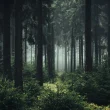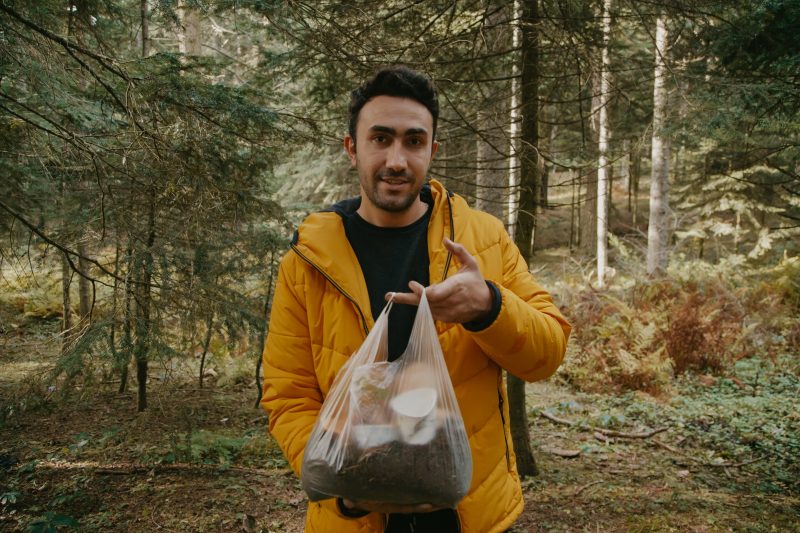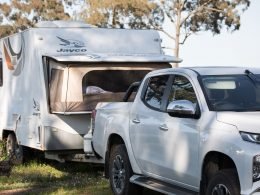Many of us spent our childhoods with adults reminding us to clean up after ourselves. For most, the constant reminders were enough. They’re now responsible adults who pick up after themselves and pass the lesson to the next generation.
However, a small group of individuals never learned the concept. Some of these people camp on public BLM lands, trashing and ruining them for the rest of us.
Today, we’re looking at who picks up trash on BLM land. Let’s get started!
What Is BLM Land?
The United States government owns a tremendous amount of land. They divide it among four land management agencies. These land management agencies provide governance and oversight for protecting and using the land for recreational purposes. One agency is the Bureau of Land Management (BLM).
There are 245 million acres of public BLM land. This is approximately 12% of the landmass of the United States or roughly the size of Texas. A majority of this land is out west and in Alaska.

How Does BLM Land Work for Camping?
Camping on BLM land is readily available. You can find developed campgrounds and dispersed camping options. Amenities vary depending on the campground, but most developed campgrounds are first-come, first-served. However, when people talk about camping on BLM land, they usually refer to dispersed camping.
For dispersed camping, you should not expect campsites or luxury amenities. Campers in dispersed camping areas must be entirely self-sufficient. They’ll need to provide water and electricity and dispose of their trash responsibly. What these campgrounds lack in amenities, they make up for with privacy and space.
BLM camping is available to everyone, but there are rules. Two of the most significant rules users must follow are obeying stay limits and not damaging the land. Any activities that cause harm to nature could result in a fine or citation from law enforcement.

Why Is Some BLM Land Closing to Camping?
Over the past several years, we’ve seen an increase in BLM land closing to camping. The BLM closed most sites recently because users were trashing and vandalizing the area. In some extreme cases, campers left human waste and destroyed natural landmarks.
Some of our favorite spots for camping on public lands are no longer available. It is the BLM officials’ job to protect the public lands, even if it means restricting use. Officials will often convert lands to day-use only before completely restricting access to an area. This allows the land and vegetation time for healing and restoration.
HOT TAKE
As more people discover the joys of camping, more places are being ruined, like these 3 Boondocking Locations Ruined By The Internet.
Who’ll Pick Up Your Trash on BLM Land?
There’s nothing more frustrating than finding a great boondocking spot ruined by trash. You’re the problem if you leave trash behind. When you litter on BLM land, park officials, volunteers, and other BLM land users must come behind you and clean up your mess.
These people all have more critical things to do than cleaning up trash that shouldn’t be there in the first place. Keeping our BLM and other public lands clean is everyone’s responsibility. However, if every BLM land user picked up after themselves, there wouldn’t be a problem.

What Is the Camping Etiquette on BLM Land?
If you’re new or considering camping on BLM land, there’s some etiquette that you should know. Following this advice will help ensure you and other campers enjoy camping.
Respect Your Neighbors
While camping on BLM and other public lands can provide privacy and space, you should still be respectful of your neighbors. Set up your campsite to maximize your privacy and that of your neighbors. You don’t want someone encroaching on your campsite.
It would be best if you also were mindful of your noise level when camping. Making some noise is understandable, but music, laughter, and the droning of a generator can carry quite a distance. You must be respectful and considerate of your neighbors regarding the sound volume coming from your site.
Only Stay the Allotted Time
While many of these campsites are first-come, first-served, you can’t stay forever. Most public lands have stay limits that authorities may actively enforce. However, just because some rangers may not enforce the limits doesn’t mean you shouldn’t follow the rules.
A typical stay limit is a maximum of 14 days in a 28 or 30-day period. However, this can vary by location and the time of year. Some officials reduce stay limits during the busiest times to allow other campers to use the land.
Obey All Rules
Before setting up camp, you need to familiarize yourself with the rules where you’re camping. If the location requires a permit, acquire one. Many BLM dispersed camping and established campgrounds have signs indicating the regulations. You consent to all the rules when you use the land.
When you obey the rules, you help ensure the area remains in good condition for future generations. You’re also avoiding legal troubles. Law enforcement will issue necessary citations to violators. They have a vital job and take their duties very seriously.
Leave No Trace
Anytime you leave a campsite, there should be no evidence of being there. This means taking your trash and camping gear with you when you go. You should avoid creating new campsites and only camp in established sites. Destruction of surrounding vegetation is frowned upon and can get you into hot water with authorities.
One of the best ways to leave no trace is to walk around your campsite before you go. Look for any items you may have dropped or set down during your stay. The famous saying, “take only photographs and leave only footprints,” applies to camping on BLM land.
HOT TAKE
Camping on BLM land might be becoming more challenging! Find out Will There Be Too Many RVs on BLM Land This Summer?

What Can You Do to Help Keep BLM Land Available for Camping?
If everyone followed the rules, BLM land would be available for future generators. However, that’s too challenging for some people. Even if you’re already following the rules, there are some things you can do to keep BLM land available for camping.
We understand it may be frustrating, but if you find a mess, that other campers left behind, clean it up. Please don’t wait for someone else to do it. Grab a trash bag and a pair of gloves, collect the trash, and dispose of it properly. It could be weeks or months before volunteers or land agents can address it.
Another way to protect BLM lands is to report violators. Call the nearest ranger station if you see someone misbehaving or violating the rules. If there are available rangers, they may come and investigate the situation and issue citations to offenders.

Is Camping on BLM Land Worth It?
Camping on BLM land is an incredible way to camp. Sadly, more BLM camping opportunities are closing down because of inappropriate use. However, we’re glad the lands are getting a chance to restore themselves. Hopefully, users will learn their lesson, and officials will open the lands again for camping. Some of our favorite camping memories took place on BLM land, and we look forward to making many more.
Where do you plan to camp on BLM land? Tell us in the comments.
If You Love RVing, You Need to Stay Informed
Don’t rely on biased RV industry news sources to keep you informed with RVing news.
Stick with Nomadic News. We publish daily articles and breaking stories that matter to your RV lifestyle.










